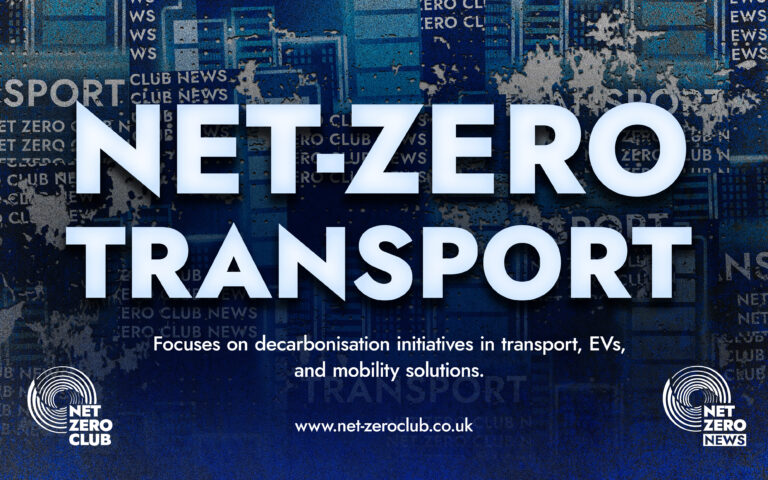Downsizing EVs to Boost Electric Mobility, GFEI Advises

Hello, Champions of Net Zero!
In the rapidly evolving landscape of electric vehicles (EVs), a new report has emerged that highlights a compelling strategy for enhancing the adoption of these eco-friendly alternatives. This strategy revolves around the reduction of electric car sizes, which could significantly boost EV adoption rates, diversify battery and vehicle manufacturing supply chains, and secure the long-term competitiveness of traditional automakers.
The report, produced by the Global Fuel Economy Initiative (GFEI)—a collaboration aimed at facilitating the global shift towards low- and zero-carbon vehicles—asserts that smaller EVs represent not only a practical solution to the current challenges faced by the automotive industry but also a strategic necessity for fostering a more resilient, sustainable, and competitive global automotive sector.
Authored by UC Davis, a partner organisation of GFEI, the working paper titled “Small and electric – The International Case to Move Away from Combustion SUVs” delves deep into the global car market trends since 2005. It reveals a concerning movement towards larger and heavier vehicles, primarily motivated by higher manufacturer profits on these models, even as sales of electric vehicles continue to grow.
One of the key insights from the report is that the increasing popularity of SUVs, which tend to be more expensive, is inadvertently slowing down the turnover of vehicle stock. This stagnation poses a significant barrier to the widespread transition to electric vehicles.
As the report outlines, larger vehicles require more materials—including hard-to-access minerals—and consume greater energy during both manufacture and operation. This focus on oversized EV models not only undermines the potential of electric vehicles to mitigate climate change and environmental degradation but also elevates consumer prices, thereby hindering market adoption.
The report highlights China as a significant player in the EV market, accounting for 27% of global passenger car sales. China’s competitive advantage lies in its ability to manufacture smaller electric vehicles efficiently, bolstered by robust battery supply chains and advanced software capabilities. This development, the report notes, limits the strategic opportunities for legacy manufacturers and dampens their enthusiasm to pivot away from internal combustion engine (ICE) vehicles.
To address these challenges, the report advocates for a strategic pivot towards the mass production of smaller EVs. This shift not only promises to enhance competitiveness but also has the potential to lower consumer costs significantly, expedite decarbonisation efforts, and promote diversification within EV and battery supply chains.
To facilitate this transition, the report proposes several public policy recommendations. These include the introduction of targeted incentives and measures such as temporary tariffs based on domestic content shares or negotiated price undertakings. Such strategies aim to support the diversification of EV and battery value chains, particularly in regions vulnerable to supply chain disruptions.
Moreover, the report calls for increased investments in cost-effective, accessible, and affordable charging infrastructure. This infrastructure is vital for supporting a wider array of electric vehicle models and making smaller battery EVs more attractive to consumers.
In addition to infrastructure improvements, the report stresses the importance of expanded research and innovation. Closing global competitiveness gaps should focus on productivity-enhancing technologies in battery manufacturing, including upstream processes in the battery value chain, as well as the development of advanced, material-efficient battery designs.
Author Pierpaolo Cazzola, co-director of the ITS-Davis European Transport and Energy Research Centre, underscores the urgency of this issue. “This report shows that the current trend toward bigger vehicles really undermines the positive impact of electrifying the global fleet. Our research indicates that smaller electric vehicles are not only better for the environment and climate, but they are also a key to successfully navigating the industrial transition,” he stated.
Sheila Watson, deputy director of the GFEI secretariat at the FIA Foundation, echoed these sentiments: “Size matters in the race to electrification. ICE vehicles are already too big and too expensive. This trend must be reversed as we move to an electric fleet and work towards a resilient and sustainable mobility future.”
The full report is accessible on the GFEI website, providing further insights into this critical issue and the steps that need to be taken to ensure a sustainable automotive future.
As we navigate the transition to a greener future, the findings of this report serve as a clarion call for all stakeholders in the automotive industry. The shift to smaller electric vehicles could be a game-changer, not only for manufacturers and consumers but also for the planet. By embracing this change, we can accelerate the path to net zero and foster a more sustainable world for generations to come.

 Got net-zero news, project updates, or product launches to share?
Got net-zero news, project updates, or product launches to share? 